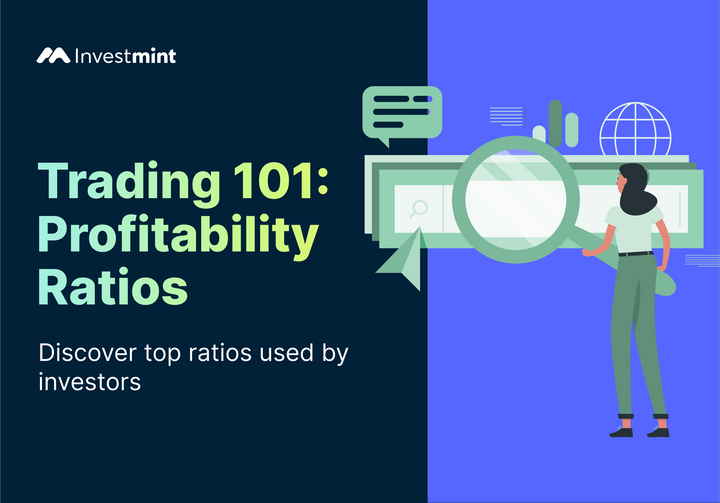Index Rebalancing: What Is It And Why Is It Required?
Index rebalancing is crucial for accurate stock market representation. Learn its impact, strategies, and more in this comprehensive guide.

Introduction
The world we live in today is evolving rapidly. New industries that didn’t exist just a few years ago are now cropping up. An index that tracks the market's top performers or offers a realistic snapshot of the market needs to evolve with it to be effective.
Imagine an index fund that tracks a broad market index. Initially, it may have a small allocation to emerging industries. However, as their market capitalisation and influence on the overall economy increase, the index fund may require a rebalancing of the index to reflect the new reality. Without rebalancing, the index fund's performance may not accurately reflect the market's overall performance and may miss out on potential gains.
In this article, we will discuss what index rebalancing is, how index rebalancing works, and the different index rebalancing strategies used.
What is An Index?
An index is a measure of the performance of a basket of securities. For example, the Sensex and the Nifty are the two benchmark indices that indicate the performance of the Indian stock markets. There are also sector-specific indices that track the performance of sectors, such as the Bank Nifty, which tracks bank stocks, or the Nifty IT index, which provides insight into the performance of stocks from information technology companies.
Indices are essential tools in finance as they provide a picture of the overall performance of a specific market or industry. They allow investors to track the performance of a group of stocks, providing a benchmark against which to measure individual investments.
Indices are also used to evaluate the performance of investment funds and portfolio managers. Indices can be used for asset allocation and risk management purposes. Overall, indices are crucial in helping investors make informed investment decisions and manage their portfolios effectively.
What Is Index Rebalancing?
Index rebalancing is the process of readjusting the weights of the composition of index portfolios to accurately represent the state of the industry or the market at a given time.
A company that is a constituent of an index may perform so well that it becomes bigger than the other companies that are a part of the index. Index providers rebalance or review their indices every quarter to determine if a stock or stocks that are not part of the index can replace existing constituents. This review is based on free float market cap and sector composition parameters.
For example, Tata Consumer Products replaced state-owned Gail India in Nifty 50 in March 2021 as the former’s free float market cap surpassed that of Gail during the period.
The Role Of Weights In An Index Rebalancing Strategy
The role of index components and their weightage in rebalancing is to maintain the index's representativeness and investment objectives. During rebalancing, the weightage of each component is adjusted to ensure that the index reflects the current market conditions and its intended investment goals. This implies that components with a larger weightage in the index will have a greater impact on rebalancing.
For example, if a component's weightage has increased significantly due to market movements, the index provider may need to adjust its weightage to prevent it from dominating the index. The idea is to maintain the index's representativeness and provide an accurate benchmark for investors.
How Is Index Rebalancing Comparable To Portfolio Rebalancing?
Index rebalancing involves adjusting the securities' weights to maintain the index's target market coverage or investment objectives. It is typically done on a regular schedule using a rules-based methodology.
Meanwhile, regular portfolio rebalancing involves adjusting the weights of securities in an individual investor's portfolio to maintain the desired asset allocation or risk profile. It is done when the portfolio deviates significantly from its target allocation, which can happen due to market movements or changes in investor objectives.
While both involve adjusting the weights of securities, index rebalancing is focused on maintaining the representativeness of the index, while portfolio rebalancing is focused on individual investor objectives.
The Importance Of Index Rebalancing
Index rebalancing is needed to ensure that an index represents the market it is made to track. The index returns to its desired level of market representation by selling overrepresented securities and buying underrepresented securities. This is important as it helps the index accurately reflect market trends and provides investors with a more reliable benchmark.
Index rebalancing can affect market performance, especially for stocks that are added or removed from the index. The added stocks experience increased demand from index funds and investors who track the index, leading to price rises. Meanwhile, removed stocks may face a fall in demand, resulting in price drops.
Rebalancing amplifies these effects, with adjusted weightage potentially leading to additional demand and higher prices for stocks with increased weight. Although index rebalancing may have a relatively minor impact on market performance, it can be significant for individual stocks added or removed from the index.
Factors That Affect Index Rebalancing
- Market Capitalisation: Changes in the market capitalisation of individual stocks can lead to their addition or removal from the index.
- Stock Prices and Performance: Higher market capitalisation and liquid stocks usually have a higher weightage on an index. As stock prices fluctuate, their market capitalisation changes, affecting their index weighting. During rebalancing, better-performing stocks may experience increased demand, higher prices, and higher weighting. Poor-performing stocks may have decreased weighting, reduced demand, and lower prices.
- Liquidity and Trading Volume: Changes in the number of shares outstanding, trading volume, or liquidity of a stock can also affect its weightage on the index.
- Changes in Company Fundamentals: Company fundamentals, such as earnings or financial health, can affect market capitalisation and ultimately impact index weighting. Business strategy or leadership changes may also influence future growth prospects, affecting index rebalancing.
How Frequently Do Index Rebalancing Strategies Get Implemented?
Index rebalancing may be done periodically, such as annually or quarterly, or significant market changes may trigger it. However, there are no fixed rules for the time period within which indices need to be rebalanced. The Nifty index rebalancing happens on March 31st and September 30th. BSE revises the Sensex semi-annually in June and December.
The primary reason why an index may be rebalanced is to stay true to the initial methodology and criteria with which it was conceived. There are many reasons why an index may be rebalanced, apart from the change in a company's market capitalisation. If a company on an index gets delisted, the index may have to rebalance its portfolio. The same happens in the case of a merger, acquisition, or stock split.
The Process Of Index Rebalancing In India
Indian indices are rebalanced periodically by adding, removing, or changing the weightage of companies based on market capitalisation and liquidity. Index providers like the National Stock Exchange and the BSE provide index construction and rebalancing methodology.
The index providers decide the weightage of each company based on various criteria like market capitalisation and liquidity. They monitor market conditions and make changes as required, providing data on the index's performance to identify market trends.
The timeline and steps in the rebalancing process depend on the index, starting with selecting companies based on the index provider's criteria. Companies are then assigned weights, the index is rebalanced, and new constituents are announced. The exchange and index provider update their databases and disseminate the information transparently to market participants.
How to Track Index Rebalancing?
If you want to track how an index has been rebalanced, there are several sources that you can turn to. For starters, you can visit the websites of the National Stock Exchange or the Bombay Stock Exchange for details on an index of the relevant exchange. They will provide information about the index rebalancing schedule, methodology, and other details.
If you want more detailed information, you can visit the websites of index rebalancers such as the India Index Services and Products Limited, CRISIL, or MSCI. You may also be able to obtain such information from news websites. However, do make sure to double-check this information with the source website to ensure that you get the full picture.
The Impact Of Index Rebalancing
- The weightage and demand of individual stocks change due to index rebalancing, resulting in price appreciation or depreciation and market volatility.
- Improved accuracy, diversification, and reduced concentration risk are some of the potential benefits of index rebalancing.
- Drawbacks include increased trading costs, tracking errors, market disruptions, and uncertainty in the selection process.
- Examples of the impact of index rebalancing include Tesla's surge in the S&P 500, GameStop's inclusion in the Russell 1000 contributing to the January 2021 short squeeze, and MSCI's 2019 rebalancing causing significant outflows from some stocks.
Risks And Challenges Of Index Rebalancing
Index rebalancing has many risks, such as market volatility, trading costs, and tracking errors. A sudden rebalancing can cause market disruptions, leading to price fluctuations. An increase due to higher demand for the rebalancing stocks can result in a rise in trading costs. When index funds do not exactly match the index's performance, leading to deviations from the expected returns, it may lead to tracking errors.
Ensuring the accuracy and transparency of the rebalancing process is one of the major challenges index providers face while rebalancing indices. At the same time, investors may experience market disruptions and liquidity issues. There may also be a lack of consensus on the criteria for inclusion or exclusion from the index, which might result in disputes and uncertainties.
Index providers can follow a transparent and careful rebalancing process that minimises market disruptions to manage the challenges of index rebalancing. Investors, on their part, can reduce risks by monitoring the index changes and adjusting their portfolios accordingly. Investing in index funds with lower tracking error and trading costs can also help reduce the impact of rebalancing. Diversifying across multiple indices can minimise exposure to any one index's risks.
Devising A Trading Strategy Based On Index Rebalancing
Crafting a trading pattern according to index rebalancing is possible, but it requires a deep understanding of the index rebalancing methodology and its impact on individual stocks. One example of a trading pattern that can be used during index rebalancing is the "front-running" strategy. This strategy involves anticipating the changes in the index due to rebalancing and buying or selling stocks likely to be added or removed from the index.
This is done in advance of the actual rebalancing, with the hope of profiting from the price movements that are likely to occur when the changes are announced. However, it is essential to note that index rebalancing events can be unpredictable, and it is difficult to generate profits using this strategy alone consistently. Traders should also consider other factors, such as market sentiment, company-specific news, and economic indicators, before making any trading decisions.
Summary
- Index rebalancing adjusts security weights in an index portfolio to maintain target market coverage. This helps reflect market trends and provides reliable benchmarks.
- Factors like market cap, stock price, and liquidity affect rebalancing, but investment decisions should not rely solely on index inclusion.
- However, any investment decisions should not be made based on whether a stock is part of the index or not.
- Some stocks may perform poorly even when they are a constituent of an index, while some stocks not part of any index can perform exceptionally well too.
Interested in getting such informative articles directly in your Inbox?
Just click on the subscribe button now!



